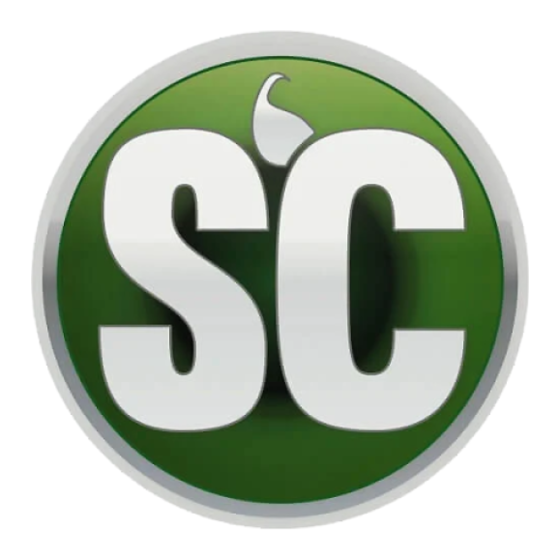
Summary of Contents for SC Space
-
Page 1: Table Of Contents
Flying in turbulence Landing Deflations Asymmetric collapse Symmetric front collapse Deep stall (parachuting) Full stall Asymmetrical stall Self-rotation Cravat In flight damage Packing Your glider General Glider Care Warrantee and Wing Repairs List of materials. Glider overview Space M line plan... - Page 2 Thank you for choosing SC Space! This manual will help you to get maximum information about your glider. This is information about the design of the Space, advice how to use it best and how to care for it to ensure it has a long life. The manual also includes technical specifica- tions and line plans.
-
Page 3: Technical Data
Technical data size scale 0,967 1,032 wing area, sq.m 21,5 24,5 span, m 12,27 12,69 13,1 projected area, 18,72 19,36 20,62 sq.m projected span, m 9,64 9,97 10,29 projected a/r 5,13 total line length, m weight of the glider, cells Vmin, km/h Vmax, km/h weight in flight, kg... -
Page 4: Risers
There are special handles on the C-riser, that have to be used for steering in accelerated flight. Space does not have trimmers and any other adjustable or removable or variable device. You can find risers drawings at the end of this manual. -
Page 5: Launching
Pull the glider by its A-risers. When it is overhead, pull the brakes to stop the glider, then turn and launch. In Flight Characteristics Space has long brake travel, light brake pressure and turns very well. It also has high resistance to deflations in turbulence. Maximum symmetric control travel is 50 cm. -
Page 6: Turn Control
In Flight Characteristics Turn control In order to make Space turn with a minimum sink and radius while pulling the internal brake you should pull very slightly the external one too. Use weightshift to decrease the spiral radius. If the thermal flow is narrow and strong, increase the tilt and the rotation speed by releas- ing the external brake. -
Page 7: B-Stall
In small winds, when you have 1-2 meters to the ground, you should pull the brakes gently to your arms’ full length, so that you put your Space in stall at a height of about 0.2 -- 0.5 m and the horizontal speed is zero. -
Page 8: Deflations
That is why you should be careful not to pull the brake too hard to avoid stall. Therefore, if there is a reserve of altitude and space, you can not to compensate the rotation - Space will take some speed, pressure inside the canopy will grow and help to open inflated part of the wing. -
Page 9: Full Stall
In flight damage Estimate the damage. If a brake has untied - no problem as Space can be steered well by weight shift and pulling the back risers. Even if the damage allows for a sustainable controlled flight, you should land as soon as possible. -
Page 10: Packing Your Glider
- Keep it away from water and other liquids - Do not let the front edge hit the ground - If wet dry Space in shade. If soaked in salty water, rinse the glider thoroughly in non-salty water - Keep your glider away from fire - Do not put anything heavy on your glider, do not pack it in a rucksack too tightly. -
Page 11: Warrantee And Wing Repairs
100 hours of flying time (whichever comes first); Those inspection must be made by manufacturer or dealer. If damaged, your Space must be repaired by manufacturer, or dealer. Small holes in Skytex may be repaired with sticky rip-stop tape. Attention please! -
Page 13: Glider Overview
Glider overview Общий вид параплана 1 - top surface / верхняя поверхность 2 - bottom surface / нижняя поверхность 3 - air intake / воздухозаборник 4 - lines / стропы 5 - risers / свободные концы... - Page 14 Risers Свободные концы Risers for Space S,M,L. Length 500 mm Свободные концы Space S,M,L. Длинна 500 мм...
- Page 16 Lines measurement SpaceM Overall lines lengths including risers. Длины строп включая свободные концы. brake 7490 7390 7470 7635 7410 7310 7390 7385 7400 7300 7380 7375 7460 7360 7440 7305 7400 7310 7380 7155 7340 7250 7320 7125 7310 7220 7290 7175 7340...
- Page 18 SPACE Serial number Production date Test pilot Dealer Date Wing check and repairs information...
- Page 19 Harness, used for testing: Supair - Access M Harness to risers distance (cm) 43 Distance between risers (cm) Sky Country, 61085 Astronomichna str., 27, 29, Kharkiv, Ukraine phone +38050 9151530 USER’S MANUAL version 1.1 issued February 2017...



Need help?
Do you have a question about the Space and is the answer not in the manual?
Questions and answers